Our Silvopasture
Our silvopasture is the foundational element of our expanding food production system to support the growing community at HYA and beyond. It will grow into the backbone for the community to eventually become self-sustaining. The silvopasture is fully organic and currently sits at 15 acres with plans to expand to 30 acres or more in upcoming years.
The term silvopasture combines the words silvo, meaning trees and pasture implying for animals. Silvopastures can vary widely in their implementation, but always include the use of trees in combination with animal husbandry. In our case at HYA, we are growing a variety of nut trees to produce food for our community as well as fodder for our future animals. Since 2021, we have grown hundreds of saplings from seed and planted upwards of 200 trees in our silvopasture. We have focused on high quality genetics of chestnuts, walnuts, butternuts, and hazelnuts from the best growers in the US. They have been planted on contour in broad spacing to both optimize rain fall capture and nut production over the life of the trees.
For more information on our process and progress please reach out via the contact page on this website.
-Sama Atmashakti Ananda, co-head of Agroforestry
Click here for a more detailed look at our project.

Aerial view of the silvopasture with our driveway winding around it.

From this angle we see tilled rows of cover crops.

There are several benefits of having a silvopasture. These benefits include fostering biodiversity, protecting water quality, encouraging tree growth, and cooling the temperature, all of which positively contribute to the ecology and combat climate change.
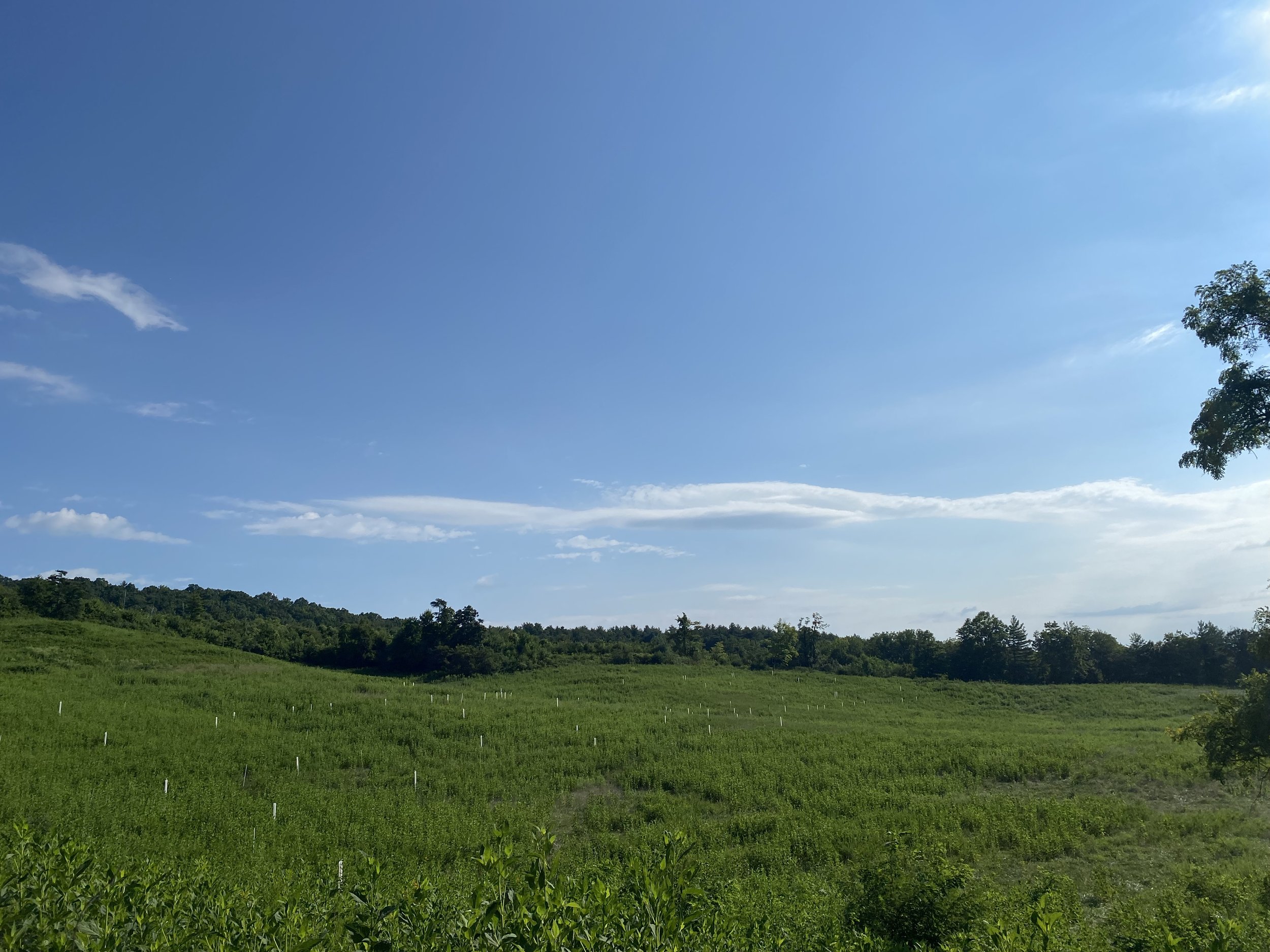
Within 10-15 years this pasture will be full of yielding trees, providing food for people and shade and fodder for livestock.

Saucha and Gyasi clear away bramble from an orchard tree.

Bhati and Sama, heads of agroforestry.

Young willow trees in the nursery bed. We keep our saplings well maintained before transplanting them.

Our Asian Pear bears fruit at the end of summer.

Anusha pinching off apple blossoms in early spring. Removing blossoms from fruit trees stops them from spending energy on producing small fruits. This redirects the energy into tree growth and leads to larger trees. The removed blossoms make a great tea.
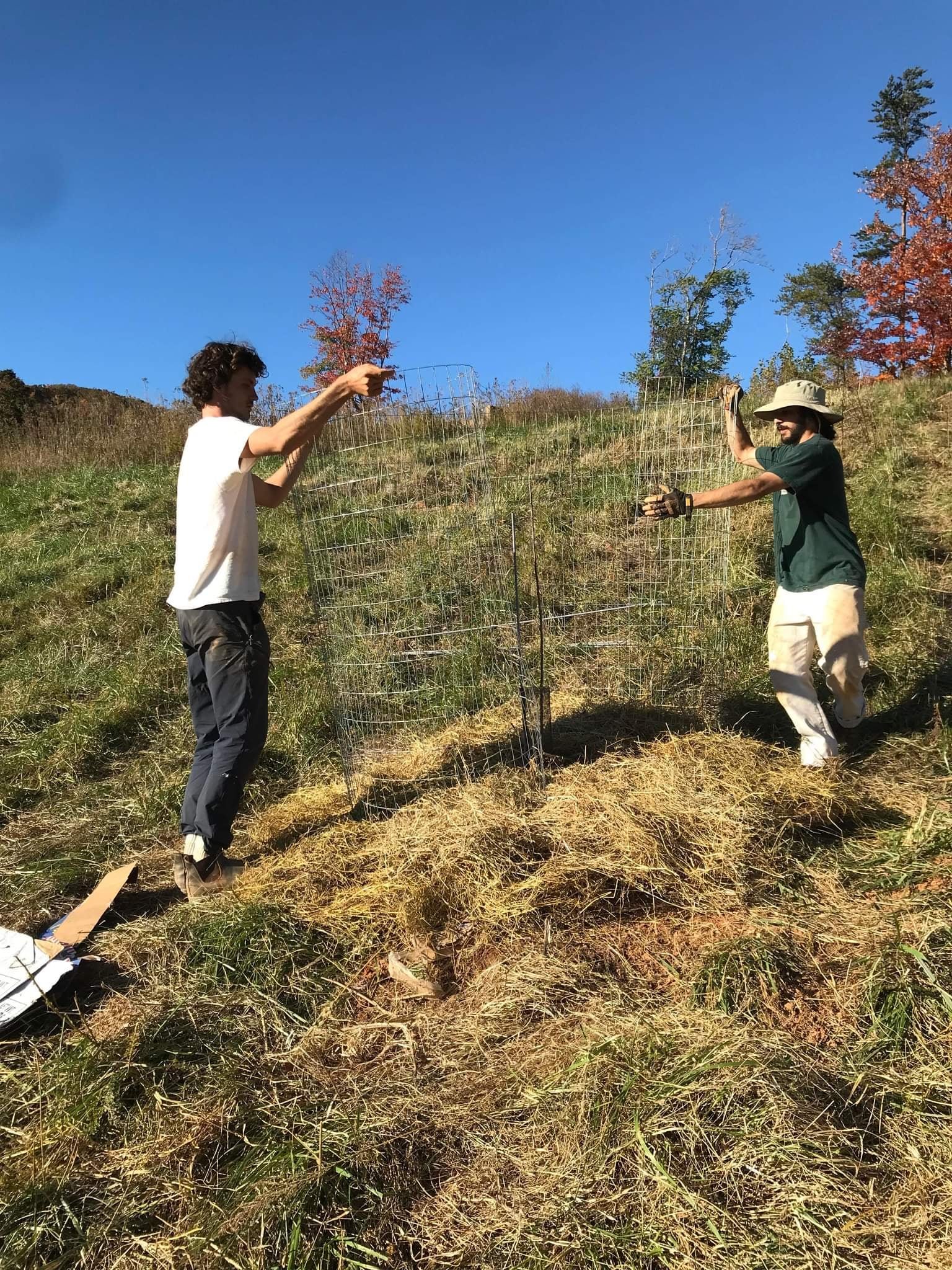
Saucha and Namita place a cage around a newly-planted cherry tree to protect it from deer. Around the tree is a mulch of cardboard and hay which retains moisture and suppresses weeds.

Bhati and Nara dropping off hay to use as mulch.

The white tubes in the field are protection for our persimmon and nut trees. The field had recently been mowed by a John Deere tractor— a task that will eventually become obsolete as livestock will one day graze the field.
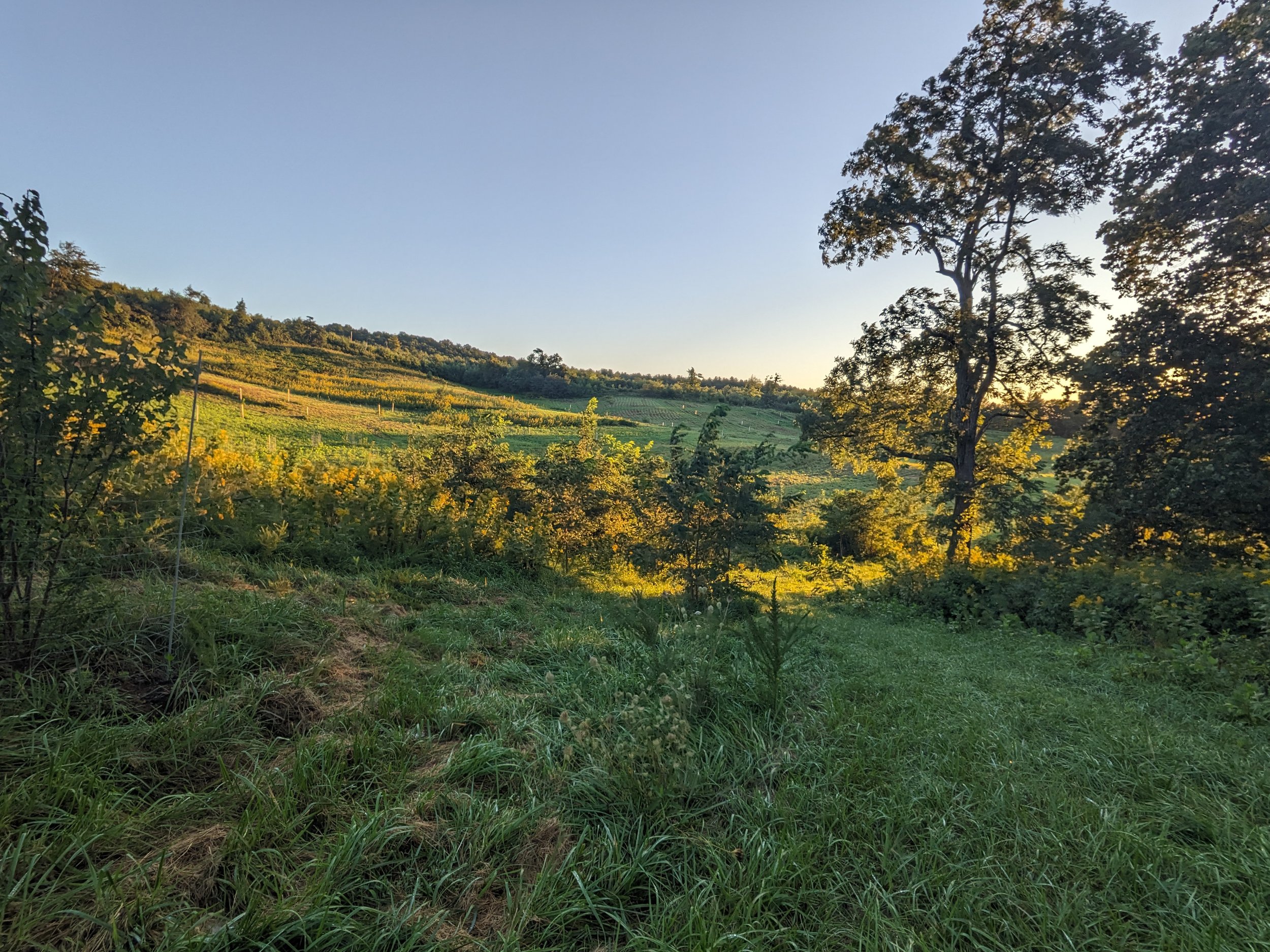
Path down to the pasture from the kitchen.

Nishka tills in cover crop seeds. Cover crops prepare the soil for our trees by providing nutrients, moisture, and weed control.
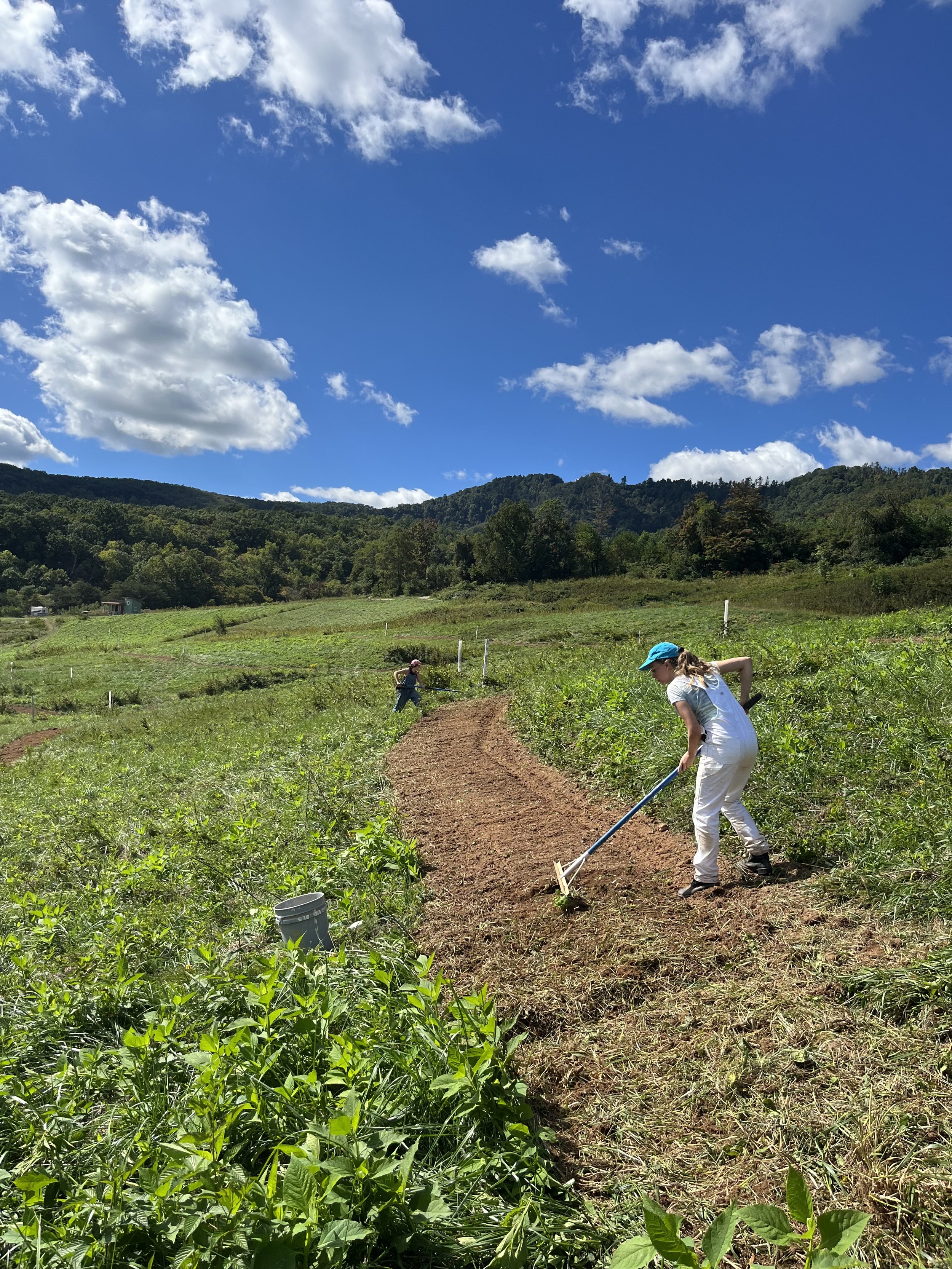
Nishka raking in cover crops.
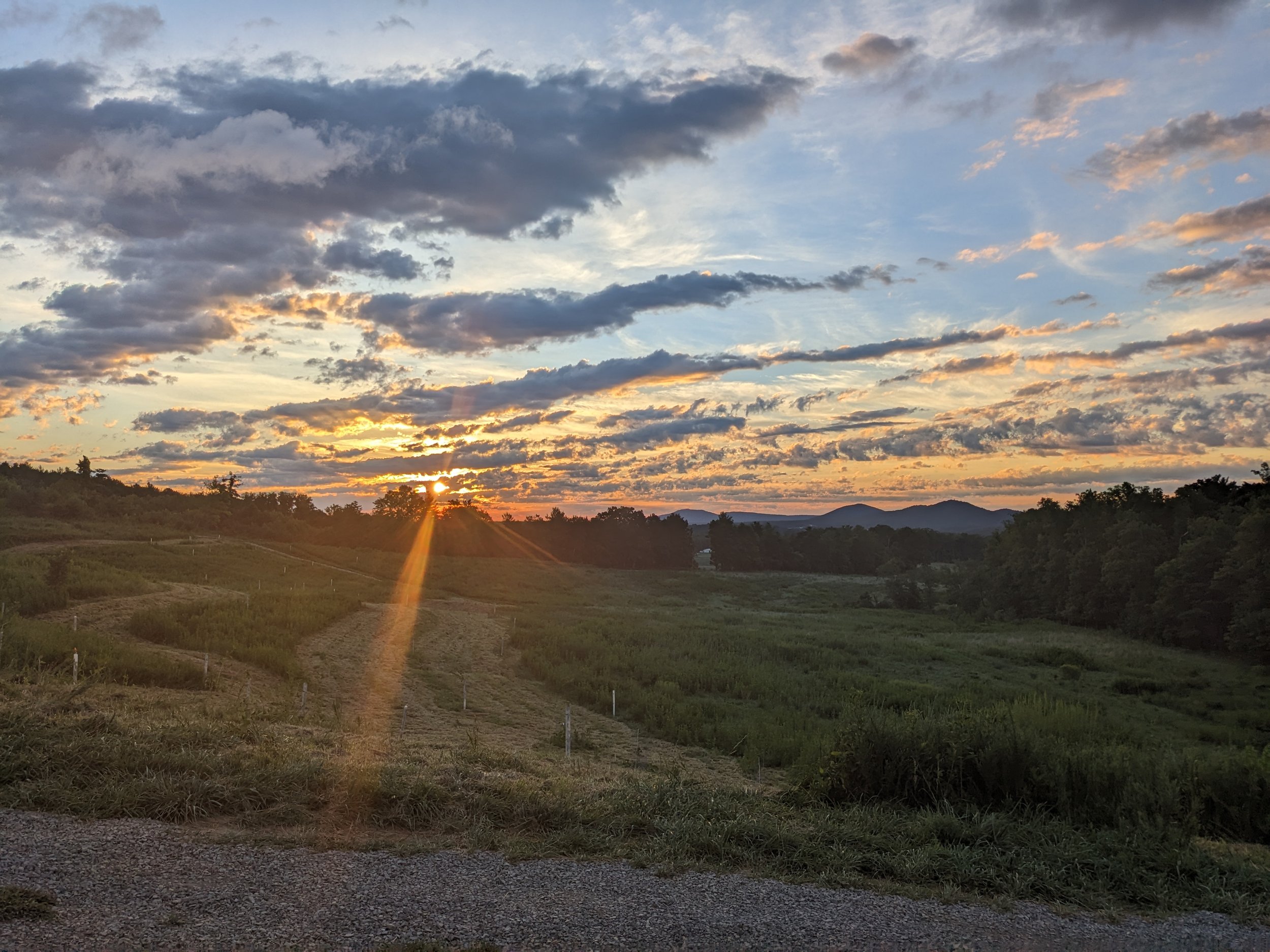
Silvopasture at sunset.

Sama, co-head of agroforestry.
